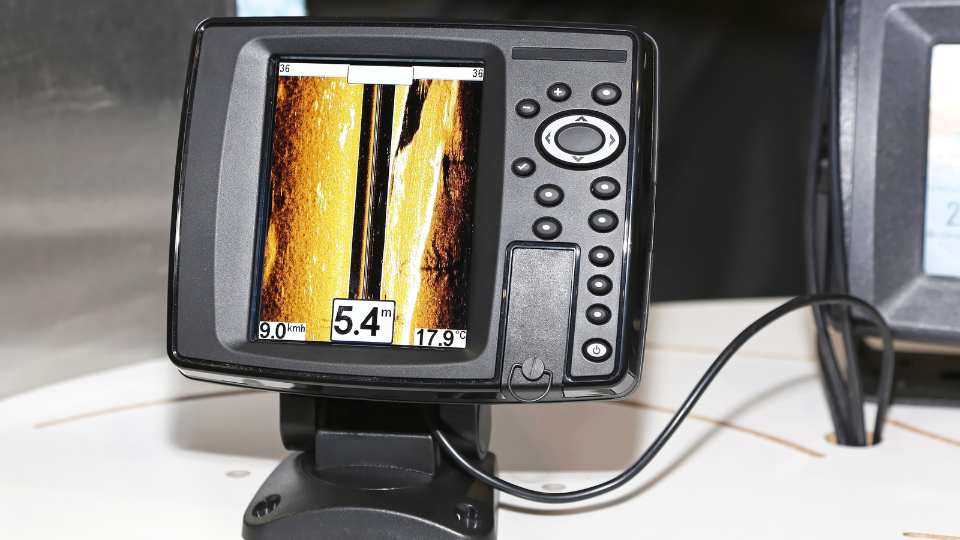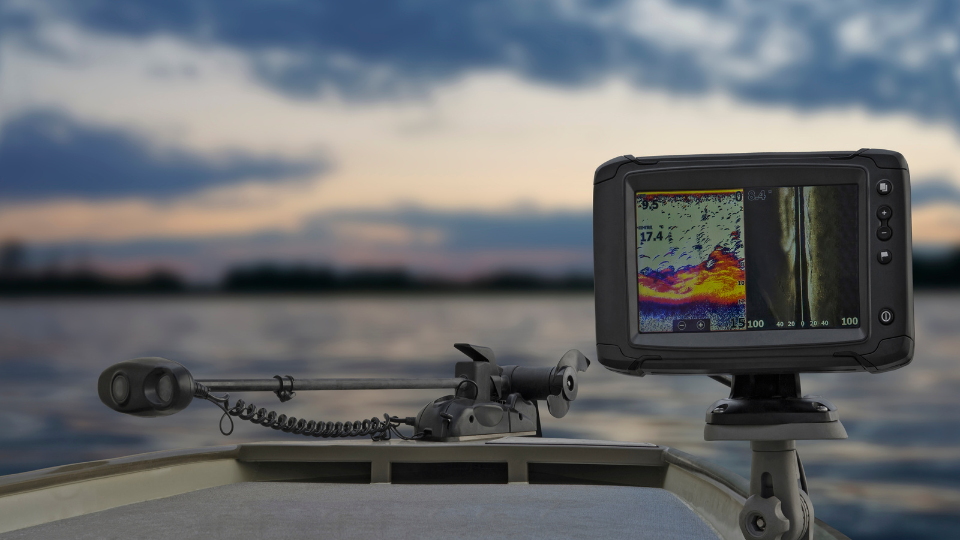When you’re out kayak fishing, it can be challenging to locate fish hiding beneath the water’s surface. For that reason, some kayakers use fish finders or cameras. But which one is best for you?
Lucky for you, I’ve used both so in this article, I will share the advantages and disadvantages of both fish finders and cameras so you can make an informed decision about which one to choose.
Fish Finders for Kayaks

Fish finders are devices that use sonar waves to detect fish and other objects beneath the surface of the water. They come as standalone units that you can mount on your kayak or as handheld devices that you can attach to your fishing rod or kayak.
Fish finders produce images that show the location of fish in the water column, as well as the depth and structure of the waterbed. The advantage of using a fish finder is that it can detect fish and at times, sharks, in deeper waters and provide a more accurate detection of the species present.
However, they can be relatively pricey and you may need to spend extra to get additional features such as GPS and mapping.
Cameras for Kayaks
Cameras are another option for kayakers to explore the water and look for fish.
Underwater cameras are available as both portable or mountable units that offer high-quality images of the water bottom. They are suitable for those who plan to explore shallow waters.
A fantastic advantage of using an underwater camera is that it provides a more realistic view of the waterbed than a fish finder. You can see the fishies in their natural habitat and watch their behavior.
However, the downside to using a camera is that these cameras are not as effective in deep water and unfortunately there is a steep learning curve to interpreting what you see on the screen.
Costs of Fish Finders vs Cameras
The cost of the fish finder or camera will also play into your decision.
A basic fish finder can cost as little as $100 while a more advanced one that comes with additional features can cost anywhere from $300 to $1,000.
With a camera, there are similar price ranges but the key difference is that you may need additional gear, such as a monitor, to view the images.
Ease of Use When Comparing Both Devices

Ease of use is also a factor to consider when making a decision between a fish finder and camera. I hate equipment that is hard or inconvenient to use so this is a big factor for me.
Fish finders are designed to be used by fishermen for identification and locating fish, making them user-friendly.
On the other hand, cameras require a bit of skill as the user must understand how to interpret what they see on the screen and make observations accordingly.
Cameras generally take more time to use, and if you are not tech-savvy, this can be frustrating. Personally, I found fish finders much easier to use than these cameras and I’m glad I was playing with a friend’s camera instead of buying one and finding this out the hard way.
Setup Considerations for Both Equipment Types
The setup for both fish finders and cameras is relatively straightforward.
Fish finders usually come with easy-to-follow instructions so you can typically get it up and running in just a few minutes.
Cameras are more complicated as most require an external monitor to view the images. Also, depending on your kayak’s setup, you may need additional mounting accessories for the camera. It was too bulky of a setup for my tastes.
Are Underwater Cameras Worth It?
If you are looking for a device that can provide images of fish in deeper waters and get detailed information about the waterbed, then a fish finder may be your best bet.
However, if you want to explore shallow waters and gain insight into the behavior of fish, then an underwater camera is the better choice.
When is a Flasher Better?
A flasher is a type of fish finder that produces an image that looks like a pulse graph.
It’s typically used by experienced kayakers who want to locate large schools of fish and can be more effective in deeper waters than a traditional sonar-based fish finder.
If you are looking for detailed information about the waterbed and the location of large schools of fish, then a flasher may be your best bet.
However, it is important to note that flashers tend to be more expensive than traditional fish finders, and you may need additional accessories for mounting and viewing the images.
Do Cameras Scare Fish Away?
Underwater cameras can be used to observe fish in their natural habitat and they do not usually scare them away. But if you are using an LED light on the camera, then it is possible that you will scare some fish away.
To avoid this, make sure to set your camera up in areas where there is plenty of cover for the fish to hide, and turn down the brightness of your LED light. Try not to move around too much while using the camera.
Do Fish Finders Scare Fishies?

Fish finders use sonar waves to detect objects beneath the surface of the water, and these waves can be disruptive for fish.
In general, it is best practice to keep your fish finder off when you are not actively looking for fish. This will help reduce disruption to the natural environment and ensure that the fish feel safe in their surroundings.
Also, make sure to set your fish finder up in areas where there is plenty of cover for the fish to hide and avoid putting it near shallow areas.
Whichever one you use, remember to respect the environment!
Which One Should You Buy?
Overall, the choice between a fish finder and a camera for kayakers depends on the species of fish you are trying to catch and conditions in which you are fishing.
If you are a beginner kayaker and fishing in deeper waters, a fish finder might be the best choice for you. If you prefer to explore shallower waters and watch the fish in their natural habitat, then a camera might be the better option.
Hopefully, this article helps you make a good decision and if you have any questions, please leave them in the comments section.
